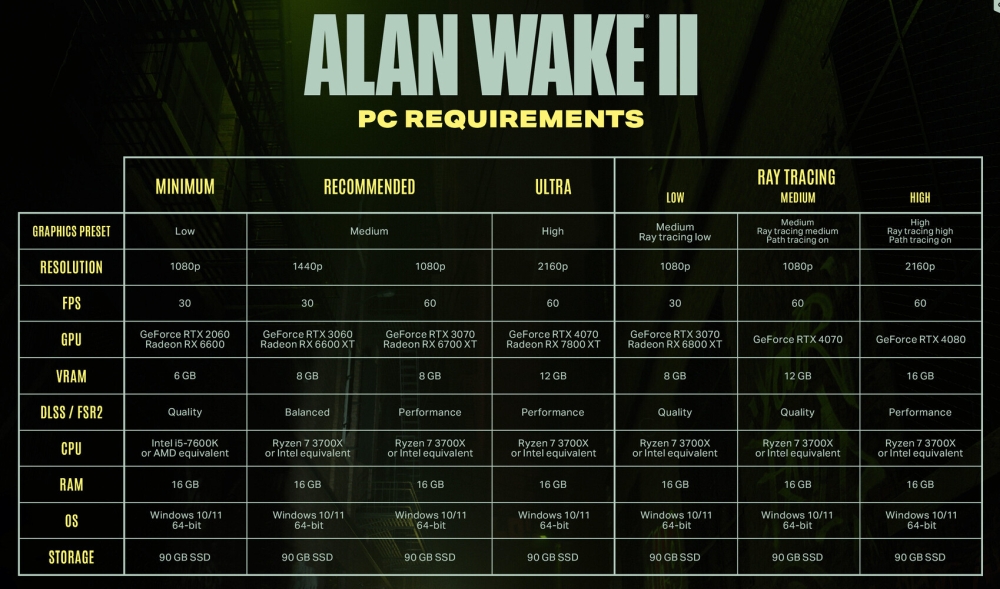Since Nvidia is Remedy's partner for Alan Wake 2 launch, bundling it with high-end RTX 40-series graphics cards, it does not come as a surprise that the game will support ray tracing, path tracing, and DLSS 3.5 Ray Reconstruction, but it also means it will push GPUs to the edge.
Minimum system requirements, which means playing the game at low preset and 1080p resolution at 30 FPS, will require a Geforce RTX 2060 or Radeon RX 6600 graphics card with at least 6GB of VRAM, Intel Core i5-7600K or AMD equivalent CPU, 16GB of RAM, and an SSD. It will also require you to enable DLSS or FSR2 set at quality setting, which is something that did not go well with the gaming community. Of course, this also means you won't be getting any of those ray tracing effects.
At ultra settings without ray tracing, which means running the game at high preset, at 2160p resolution and 60 FPS, you'll need a Geforce RTX 4070 or Radeon RX 7800 XT graphics card, Ryzen 7 3700X or Intel equivalent CPU and 16GB of RAM. Once again, you'll need to enable DLSS or FSR2 at performance mode.
If you want to run the game with those ray tracing effects, at medium settings and ray tracing set at low, you'll need RTX 3070 or RX 6800 XT, Ryzen 7 3700X, and 16GB of RAM. This will give you 30 FPS at 1080p resolution and DLSS/FSR2 enabled at quality settings.
While it might seem that running the game at with all the bells and whistles might not be possible, Remedy says you'll need Geforce RTX 4080, Ryzen 7 3700X CPU, and 16GB of RAM. This will get you high graphics preset with ray tracing set at high and path tracing on, at 2160p resolution at 60 fps. You'll need to enable DLSS in performance mode. Of course, Nvidia Geforce RTX 4090 will get you fluid gaming.

To make things worse, it appears that Alan Wake 2 will be the first game to require Mesh Shaders, a part of Microsoft's DirectX 12 Ultimate feature set. This means anything below the AMD RX 6000 series or Nvidia RTX 20 series won't run the game.
Alan Wake 2 will launch on October 27th.




